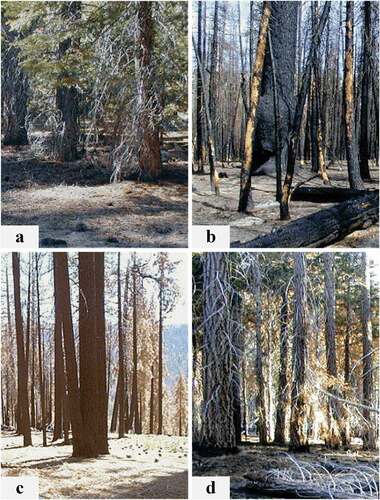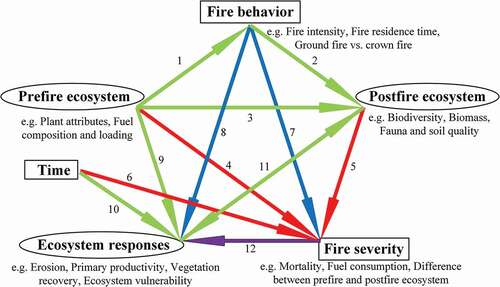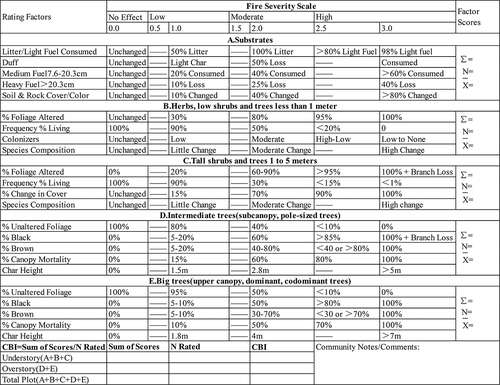Figures & data
Figure 1. Examples of 2001 Hoover fire severity classes (van Wagtendonk, Root, and Key Citation2004), a, unburned; b, high; c, moderate; d, light

Table 1. Canopy-severity index and their characteristics descriptions
Table 2. General forest fire severity classes and their characteristics descriptions, summarized and modified from (Keeley Citation2009; Ryan Citation2002; Ryan and Noste Citation1985; Turner et al. Citation1994)
Table 3. Common remote sensing indices for quantifying fire severity
Figure 3. Conceptual model for fire severity measuring. Ellipse indicates latent variable; rectangle indicates manifest variable. Besides, green lines indicate respective relationships that are significant but restricted/ non-unique; purple lines indicate relationships that we expect to recognize; red lines indicate relationships that must be utilized, which are the cornerstones of all fire severity measurement methods; blue lines indicate relationships that are difficult to be observed or exploited


